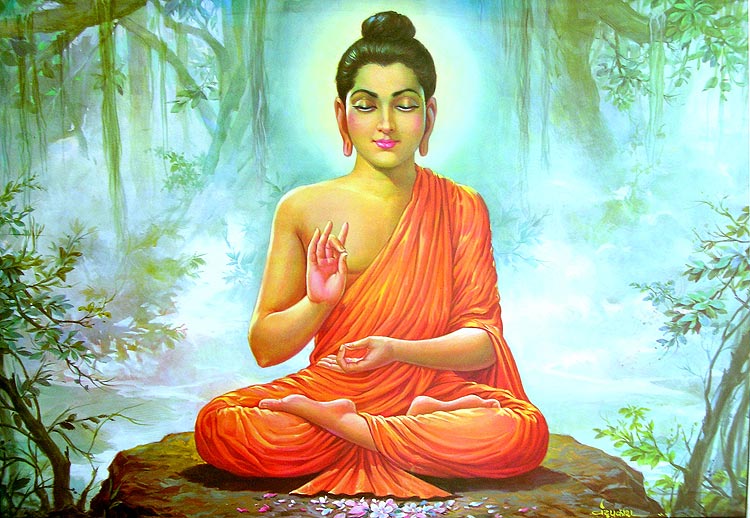 |
| The Historical Buddha |
The differences arise in method and literature. As for literature, the Theravada tradition relies on teachings recorded in the Pali language, while the Mahayana tradition relies on teachings recorded in Sanskrit. Although these teachings essentially spread the same message (a means to be free from suffering, understanding suffering, etc.), that message can have different interpretations, which is how the two schools come to differ in method. The Mahayana tradition highly emphasizes the bodhisattva path as the most powerful method for reaching enlightenment (freedom from suffering and the causes of suffering). The bodhisattva path, in a nutshell, is the lifestyle that is dedicated to helping all other beings. The happiness of all others is the main concern of the bodhisattva, and bodhisattvas try to cultivate this happiness through compassion, a positive mindset, understanding, and more. The Theravada school of Buddhism does not emphasize the bodhisattva path as essentially as in the Mahayana tradition, but instead focuses more on meditations to cultivate wisdom and insight.
The Emaho Foundation follows in the Mahayana tradition, along with North Asian countries such as Tibet, China, Taiwan, Japan, Korea, and Mongolia. The Theravada tradition has followers in Southern Asia, for example Sri Lanka, Thailand, Laos, and Cambodia. Understanding the Mahayana tradition is a crucial aspect of my research project, for I am studying the nature of the Mahayana tradition and how it applies in the local community in which I live. There are many extensive works written on the differences between various forms of Buddhism, and this blog post is just a tid-bit of the vast information available.
No comments:
Post a Comment